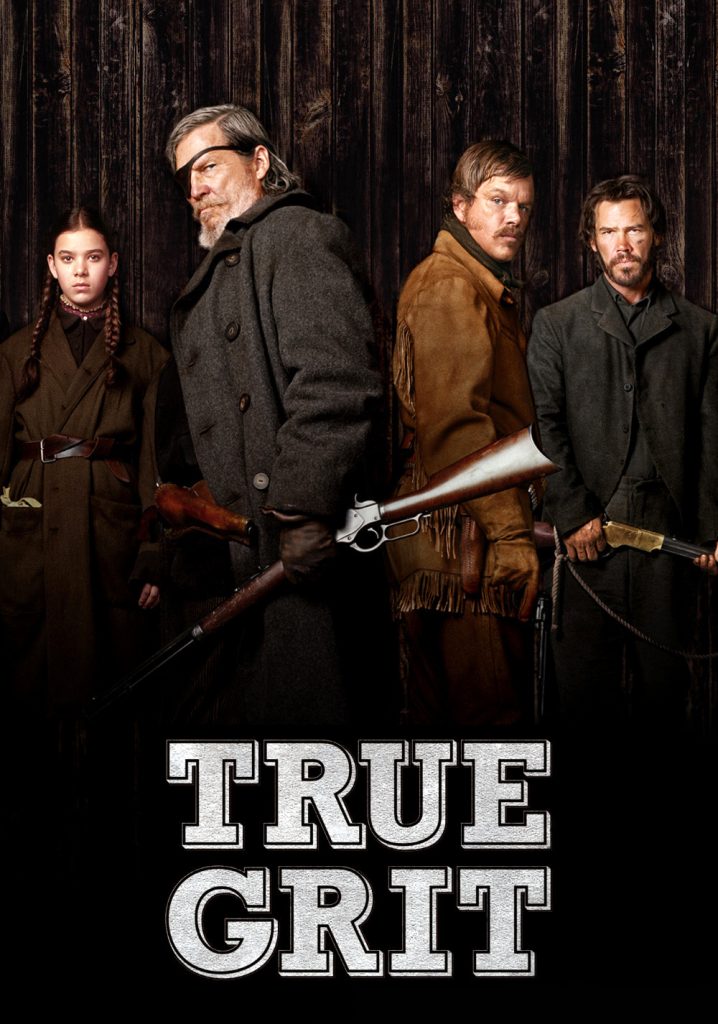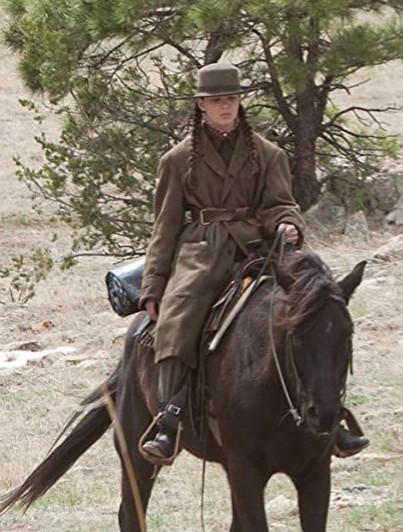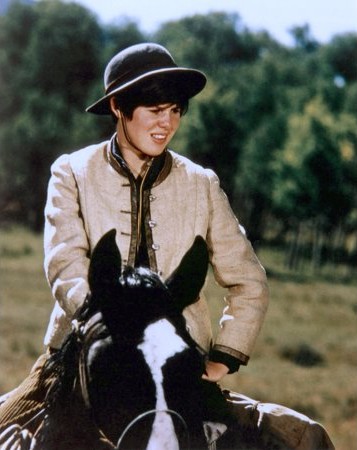Although the tone of True Grit (2010) is primarily light-hearted and comedic, the narrative explores dark themes of grief and revenge. After her father is murdered, fourteen-year-old Mattie Ross (Hailee Steinfeld) embarks on a journey to ensure her father’s killer is hanged for his crime, enlisting the help of infamously violent and self-serving U.S. Marshal “Rooster” Cogburn (Jeff Bridges), and traditional U.S. Marshal LaBoeuf (Matt Damon). Mattie’s horse, Little Blackie, physically and symbolically enables the young girl to pursue her goal throughout the narrative, acting as a representation of Mattie’s own fanatical but powerful need for vengeance.

After their first interaction, LaBoeuf and Rooster believe the child should not be accompanying them and attempt to leave her behind. When a ferryman tries to prevent Mattie from following the pair, she escapes by throwing an apple at him and speeding off on Little Blackie. A triumphant, western-epic inspired score begins to play as they approach the river, the extradiegetic sound emphasising the freedom and empowerment that Little Blackie gives to Mattie throughout her journey, in the same way that Mattie’s compulsion for revenge also empowers her. Although the role of Little Blackie as a willing servant of the protagonist’s goals is a typical representation in western cinema, featuring a teenage girl in this main role is particularly atypical for the revisionist-western genre. This context in turn places greater importance on Little Blackie’s portrayal, as the film aims to establish Mattie’s violent strength through the horse’s presence.
Next, a close up shot of Mattie’s face appears and she speaks with urgency, “Go on, Little Blackie, go on”, which further confirms Little Blackie’s essential role in enabling the young girl. As the pair negotiate the deep water, a medium-long shot establishes Little Blackie’s head and neck, standing out as tall and powerful amongst the waves. The dark colour of the horse’s coat is a stark contrast to the surrounding scenery of muted tones, which aids in the representation of Little Blackie as Mattie’s mighty but insidious need for vengeance. Following this, Mattie can be seen behind Little Blackie in a medium close-up, appearing much smaller than the horse as she is pulled through the water, illustrating Mattie’s dependency on Little Blackie’s powerful abilities.
In the subsequent long shot, Mattie and Little Blackie are visible in the middle of the river. The mise-en-scene presenting them both as small, alone and isolated in the rough current. The pair are entirely alone in a dangerous and alien environment, with Little Blackie’s strength acting as Mattie’s only defence against the dangerous landscape. Arriving at the riverbank, Little Blackie’s strength is demonstrated once again through a medium-close up shot of the pair climbing out of the water, the horse’s muscular frame glistening as he moves. As previously mentioned, the film must show the audience that Mattie has the violent strength she needs to fulfill her goal, and the focus on Little Blackie’s physical prowess helps to establish this.

Mattie and her trusted companion and servant Little Blackie, the similarities in colour between the horse’s coat and Mattie’s clothes is suggestive of the representative role that Little Blackie plays. 
Mattie Ross and Little Blackie in the original 1969 version of True Grit, the Coen brothers weaved noticeably darker themes into their retelling, and the physical appearances of Mattie and her horse are one demonstration of this.
As the scene ends, Mattie confronts her elusive companions and Rooster refers to the strength of the horse. Given the general disregard Rooster has towards others, he is hesitant to vocally acknowledge Mattie’s “grit” (even though he is undeniably impressed by her ability to traverse the river). However, through his acknowledgement of Little Blackie’s tenacity, Rooster also delivers his judgement of Mattie. Using the horse in this scene as a vehicle for Rooster’s recognition of Mattie’s willpower extends the presence of Little Blackie’s representational role within the film.
Rooster’s resistance to accept Mattie’s capability is understandable; in the mythology of Western cinema, it is almost impossible to imagine a teenage girl successfully navigating the dangerous lawlessness typically presented in these films. In aid of this, Little Blackie exists not only as Mattie’s servant, but also as an extension of her nature, enabling her to prove herself worthy to the Marshalls and to the audience. This is what makes Little Blackie’s presence within the plot so interesting, because although the horse fulfills a rather typical role as the enabling servant, the symbolic presence of Little Blackie in the narrative of revenge is complex and thought-provoking. Appearing as the representation of Mattie’s compulsive need for revenge, Little Blackie also provides much-appreciated support and companionship for Mattie on her quest; and his death is sorrowful and sentimental. True Grit presents a dichotomous and rich illustration of the dynamics at play between humans and horses, and Little Blackie’s life and death on screen ultimately affirms the film’s underlying thematic philosophy that the distorted nature of vengeance and grief has complex, unexpected and disorganised results.